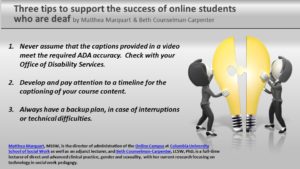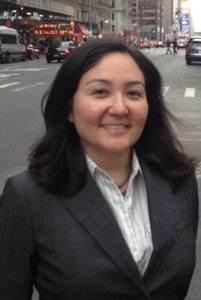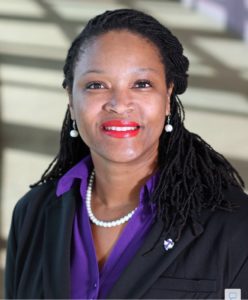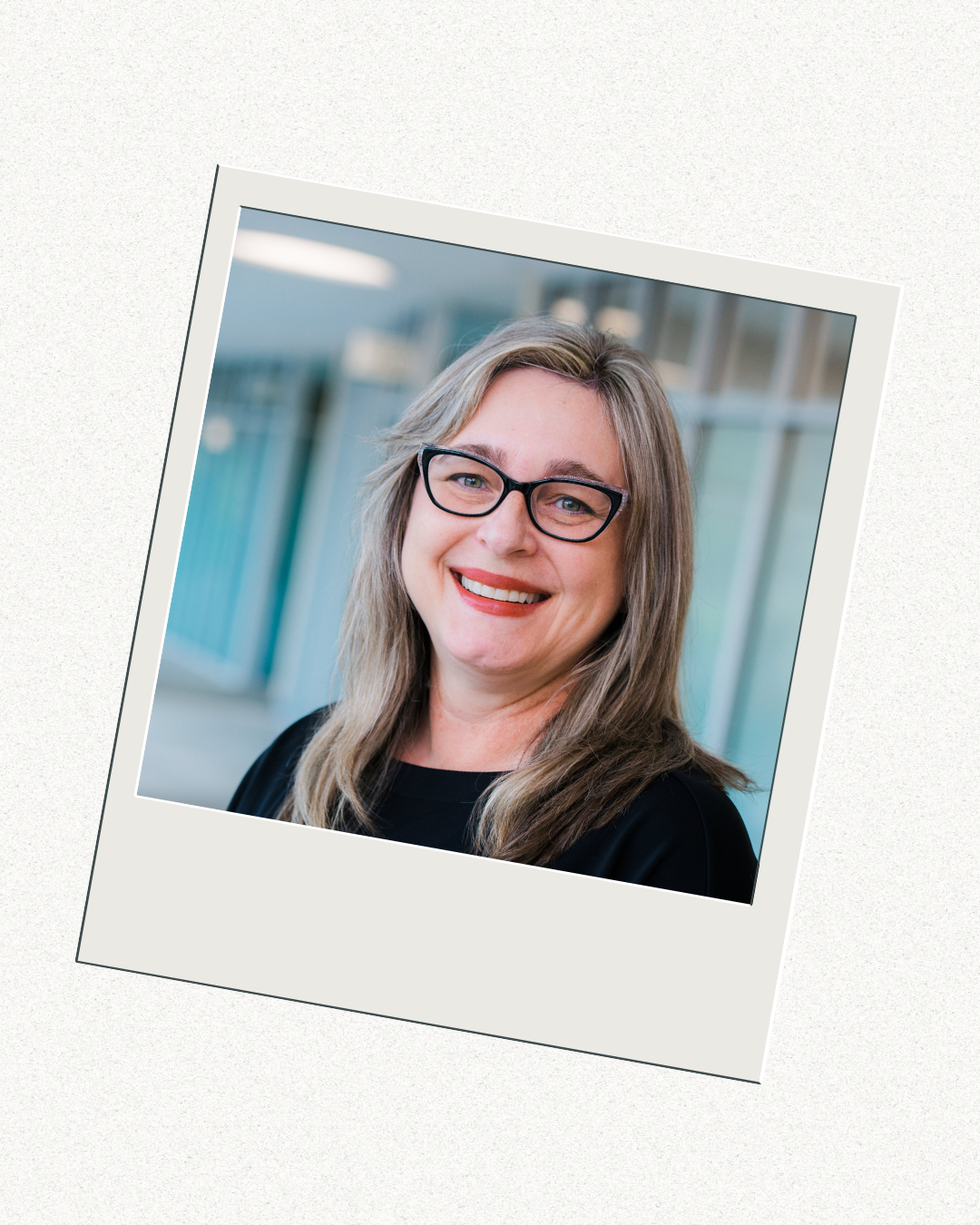Teaching Technology-Mediated Practice in a Clinical MSW Program
 Janet Vizina-Roubal, DSW, MSW, is an Associate Professor of Social Work at Ferris State University in the Department of Social Work. In this blog post, she writes about her inspiration for a technology-mediated practice assignment with MSW students. Assignments like this one will be increasingly valuable for social work students preparing to use technology with clients while meeting professional and ethical practice standards such as the NASW Code of Ethics and the NASW, ABSW, CSWE & ACSW Standards for Technology in Social Work Practice. If you have questions about the assignment, you can reach Dr. Vizina-Roubal on Twitter at @jvizina.
Janet Vizina-Roubal, DSW, MSW, is an Associate Professor of Social Work at Ferris State University in the Department of Social Work. In this blog post, she writes about her inspiration for a technology-mediated practice assignment with MSW students. Assignments like this one will be increasingly valuable for social work students preparing to use technology with clients while meeting professional and ethical practice standards such as the NASW Code of Ethics and the NASW, ABSW, CSWE & ACSW Standards for Technology in Social Work Practice. If you have questions about the assignment, you can reach Dr. Vizina-Roubal on Twitter at @jvizina.
I started teaching my first clinical MSW course the fall of 2014 with excitement and nervousness. With almost eight years of clinical experience in school social work and outpatient therapy, I had a great toolbox of practice tips to share with my students. Adding to the excitement was the idea of creating a technology-based assignment where students could learn and practice technology-enhanced therapy skills. Because I had completed and presented research with a colleague about the benefits of using iPhones in child welfare work, I was curious about how I could create a technology-based assignment for MSW social work students.
Clinical MSW social work classes typically rely on a vast amount of face-to-face role-plays, requiring students to play the part of client and social worker. This experiential learning is challenging, however is very effective at teaching students critical clinical skills. I was interested in stretching this experiential learning process into role-plays for a technology-mediated learning environment, with the goal of helping students learn how to engage with clients via technology-based communication tools. Based on this idea, I worked to structure assignments that would allow students to learn how to use technology within clinical social work. As I embarked on this journey, I searched for curricula or assignments on how to teach online therapy along with best practices. Bewildered, I found almost nothing (Cardenas, Serrano, Flores, & De 2008). I did stumble upon research that showed promising findings that online therapy might be as effective as face-to-face therapy (Chester & Glass, 2006; Dowling & Rickwood, 2013; Holmes & Foster, 2012). This finding legitimized my interest in pursuing this course of instruction and compelled me to develop assignments where students gained experience within online therapy; practicing as the client as well as the therapist.
Supporting the success of online students who are deaf: Lessons presented at #SWDE2017
Matthea Marquart, MSSW, is the director of administration of the Online Campus at Columbia University School of Social Work as well as an adjunct lecturer, and Beth Counselman-Carpenter, LCSW, PhD, is a full-time lecturer of direct and advanced clinical practice, gender and sexuality, with her current research focusing on technology in social work pedagogy. In this blog post, they share highlights from their recent presentation on supporting the success of online students who are deaf. If you have questions for them, they can be reached on Twitter at @MattheaMarquart or @ElisabethAnneCC.
On April 13, 2017, we presented a roundtable session on “Supporting the success of online students who are deaf” at the third annual Social Work Distance Education Conference sponsored by Our Lady of the Lake University’s Worden School of Social Service.
We chose this session topic because social work values, as well as the law, require those of us involved in online education to ensure that we’re providing equal access to all of our students. As the field of online education grows and new technologies develop, it’s important to us to make sure that we’re inclusive in administration, planning, and teaching. We also wanted to host a conversation on the topic, so that we could learn from the experiences of our peers at other institutions.
You can access a copy of our handout, which includes details about the tools & strategies we’ve used to support online students who are deaf, here: https://doi.org/10.7916/D8V12B58
 From our perspective, there are three critical components to success: never assume, attention to a solid time line, and thorough preparation with a back-up plan for live course sessions.
From our perspective, there are three critical components to success: never assume, attention to a solid time line, and thorough preparation with a back-up plan for live course sessions.
Never assume: My experiences (Beth) with deaf and hearing-impaired students over the past year has made me a stronger and more thoughtful instructor. It forced me to actively challenge certain assumptions I had previously held about equal access and thus deepened the creativity in and outside of the classroom to look at access through a more critical lens. When choosing media for your course, never assume that the captions provided are of the level and caliber in terms of accuracy. YouTube videos are NOT equal access compliant, as they are often inaccurate or their timing is off. All media selected by the instructor must be captioned by the institution’s captioning services or be reviewed for accuracy by the Office of Disability Services prior to being assigned, shown or posted. This also includes transcribed videos shown from the library, when transcription has been completed by outside sources, and for podcasts.
Teaching with Infographics: My experiences with digital literacy and non-traditional students
Nathalie P. Jones, PhD, MSW is an Assistant Professor of Social Work at Tarleton State University. In this blog post, Dr. Jones writes about her experiences creating and implementing an infographic assignment with nontraditional social work students.
As an Assistant Professor of Social Work at Tarleton State University, I have absolutely enjoyed educating social work students on the use of technology through macro social work practice courses. I teach a large number of non-traditional learners (those who have been out of school for longer than one year, and are employed, parenting, or in any other roles that are competing with being a learner as defined by the National Center for Education Statistics [2015]). I find that they develop student groups quickly in order to have support while working on assignments, especially those assignments that include the use of digital technology.
To help my students improve their understanding of digital and social technology, I have introduced the use of infographics during an advanced social work course entitled Women’s Issues. Infographics are visual representations of almost any type of information. Infographics are similar to storytelling with visual content and supported with statistical data. They are an effective way to communicate large amounts of information in a clear and succinct way, and are an increasingly popular tool in popular media and the non-profit world (NonProfit Tech for Good, 2014). Understanding how to create, share and evaluate infographics is a key digital literacy skill for social workers (Shelly, 2015). Along with all these benefits, I wanted to create an assignment that was fun and engaging for my nontraditional students who are often nervous about nontraditional, digital assignments.
For the Women’s Issues course, I asked students to research an issue or social problem affecting women, turn that research into an infographic (rather than a written paper), and then share their infographics with professionals outside of the class as a way to network with alliances who advocate on behalf of women. This meant students needed to not only create a quality artifact for a grade, but also learn how to share it with other advocates in a public way – via social media. In an effort to support learners who were experiencing technology in college for the first time, I provided them with seven detailed steps to successfully complete the infographic assignment. These steps involved learning about Twitter as well as creating an infographic.
Here are the assignment steps directly from the course syllabus:
Step 1: Create a Twitter Account & provide your Twitter Handle. *Don’t forget to follow the instructor.
Step 2: Research & provide a resource of two infographics (1) from the web and (1) from Twitter related to Women’s Issues. Then, provide a 1-2 page comparison on how the infographic was distributed, what was learned & why this is a resource for issues related to women.
Modeling Practice: Social Media Guidelines in Social Work Field Education
Last year, I wrote my own profession guidelines for how I use social media in my professional practice as a social work educator. This is often referred to as a Professional Social Media Policy, and is a recommended practice from National Association of Social Workers (NASW, n.d.). Specifically, these guidelines are personal to me, and describe how I strive to interact with students, colleagues and other professionals when using digital and social media. I include these guidelines in my course syllabi and they guide how I use social media to engage students online, disseminate my research, and network with colleagues.
These guidelines came about because of a collaborative project with Allison Curington, Director of Field Education at the University of Alabama. We have been working a toolkit to help social work field educators deal with ethical and practical issues related to the use of social and digital media in field education, focusing on information and tools to help field directors raise awareness with students and field supervisors. As part of this process, Allison also wrote her own professional social media policy. She then decided to ask the entire staff in the UA Office of Field Education to assess their social media use for their own policies. In this interview style post, Allison shares her thoughts about how the process worked and the UA Field Staff developed their own professional social media policies.
How did you write your own policy? How did you approach this process?
Navigating the landscape of technology and social media has been quite the challenge in field education. I can remember when MySpace was all the rage as I was beginning my career as a field director. However, there were very few students in our graduate program who participated on social media platforms. Honestly, we were just trying to navigate not having enough cell phone coverage in rural areas at that time! Fast forward 13 years and you have an entirely new landscape. I would have never dreamed as a field director that I would be dealing with a generation of students who use their primary mode of communication with something other than the phone, e-mail, or even snail mail.
The Shared Case Study: An online activity for Interprofessional Teamwork
Natalie Curry, LCSW is a Clinical Instructor at Missouri State University’s (MSU) School of Social Work. She has been on the faculty with MSU for two years and prior to that was an adjunct instructor for MSU, Drury University, and Washington University in St. Louis. Prior to entering academia, her practice background includes working with individuals who were homeless in various capacities, inpatient psychiatric care, and behavioral health consulting in primary care. In this post, she writes about an online, interprofessional learning activity that she helped to develop and implement with colleagues at MSU You can follow Natalie on Twitter at @natalielcsw.
Last fall, there was considerable interest around interprofessional education in the College of Health and Human Services (CHHS) at Missouri State University (MSU), where I work. My colleagues and I believed that we were doing well at talking with our students about how much collaboration they would do in their careers with other healthcare professionals. But we wanted to go further and figure out ways to provide the students real opportunities for interprofessional practice in their educational programs. That was part of the motivation for bringing together faculty from all 11 disciplines (such as social work, nursing, medicine and others) within CHHS, in addition to the University of Missouri-Kansas City School of Pharmacy which was already in partnership with MSU. The other part of motivation was a growing recognition that interprofessional activities were no longer just encouraged in many of our disciplines’ accreditation standards; they were required.
Starting in Fall 2015, our committee to begin developing interprofessional educational activities for our students. We met monthly and eventually decided that it was not feasible to develop one activity, project, or experience that all students from CHHS could do together and still be meaningful. We decided on four “menu items” that each discipline could choose to participate in, depending on the needs of their students. We wanted to have a mix of interprofessional activities, ranging from one-day experiences to projects that could be implemented over the course of a semester.
Talking Technology Competency in the Social Work Classroom
Elise Johnson, LCSW is a clinical social worker at Long Beach Memorial Medical Center/Miller Children’s and Women’s Hospital of Long Beach. She has practiced social work in the L.A. area for over 20 years in the areas of health care, mental health, homelessness and child welfare. She is also a part time lecturer. She is by no means an expert in technology but is always on the lookout for technological innovations that could help clients and students. In this blog post, she writes about how she incorporates technology into her MSW courses.
I’ve been in the field of social work for nearly twenty five years, and I’ve been a lecturer for two and a half at California State University, Dominguez Hills. I teach two theory classes (Human Behavior I and II) in the MSW program. Given my clinical background, my overarching message in HBSE (Human Behavior and the Social Environment) is that theory is viable and applicable to contemporary social work practice. The incorporation of technology into my pedagogy is an important element of that framework. Integral to my teaching approach is the view that technology is an asset, an assistive value; one that should be viewed through a strengths-based lens similar to every other aspect of our profession. Initially, I decided to dedicate a week to the topic of technology in social work practice, and over the last couple of years, I have updated long-standing assignments by embedding them technology-based elements. For example, first year MSW students are developing competencies conducting bio-psychosocial assessments in other courses, In HBSE I, I encourage them to expand this traditional assessment to include an assessment of their clients’ technology literacy, access, strengths and risk factors across the lifespan. By integrating course content and assignments around technology in social work practice, students not only understand the role of technology in social work, they also learn to apply and practice with the very technology they may use in the real-world.








